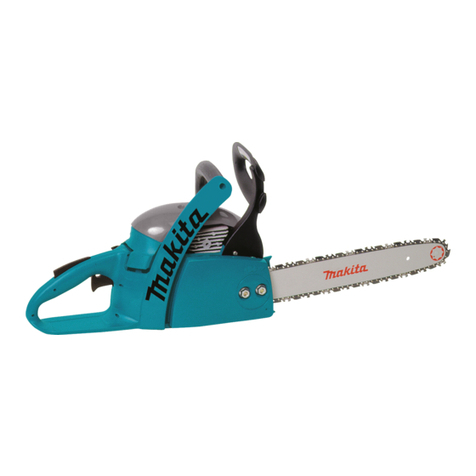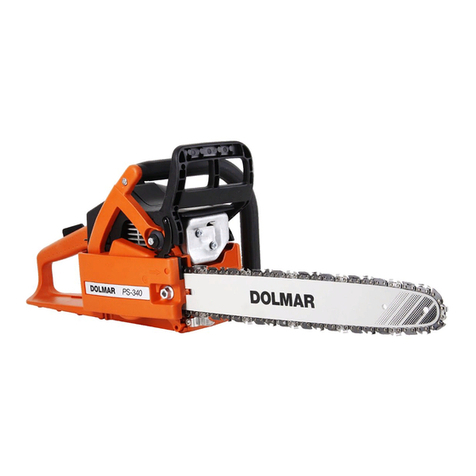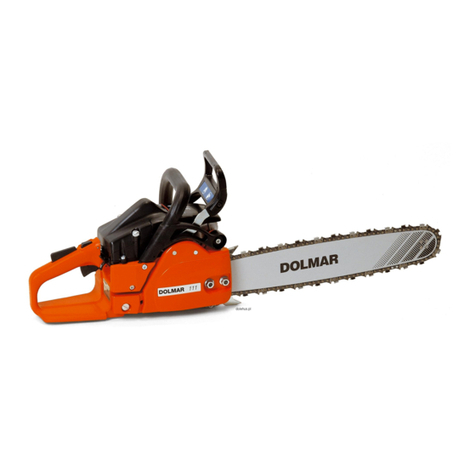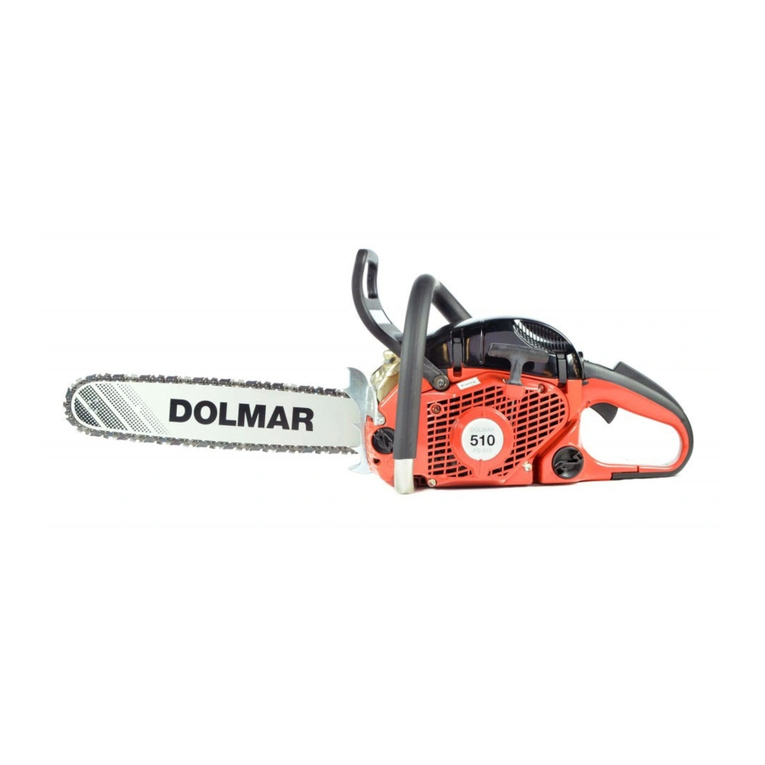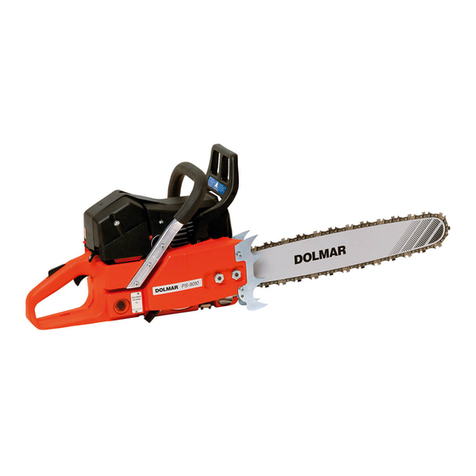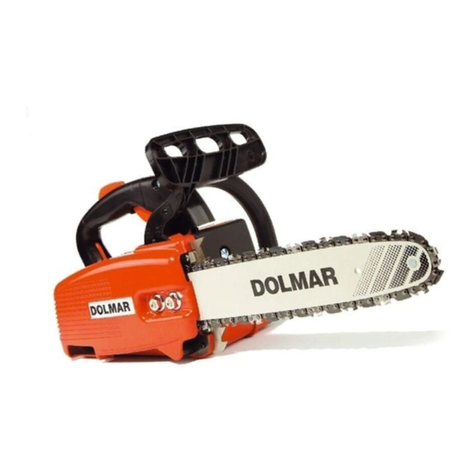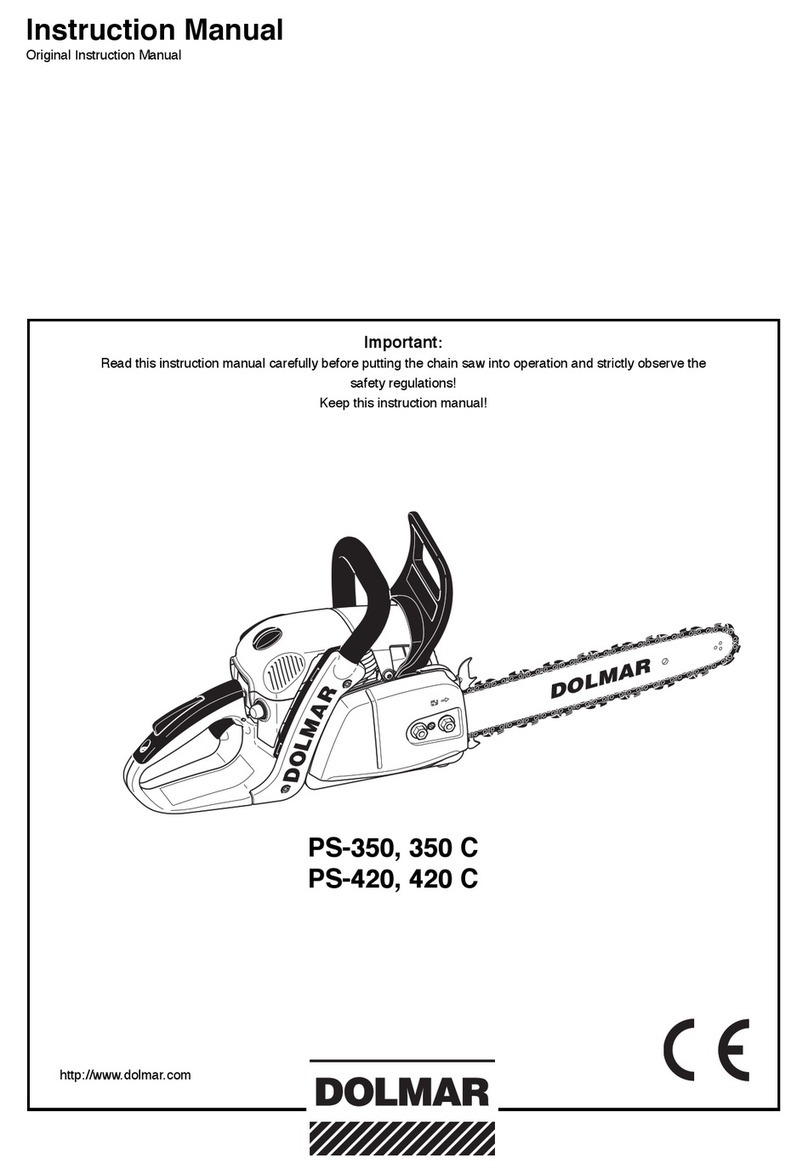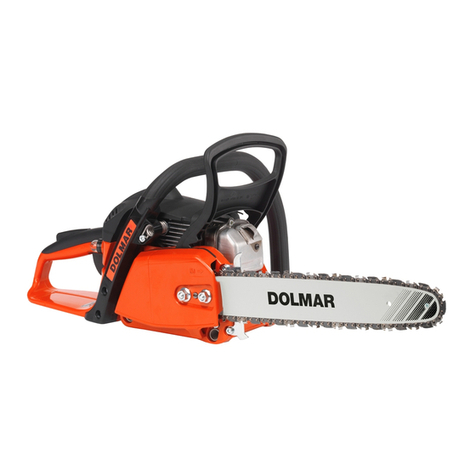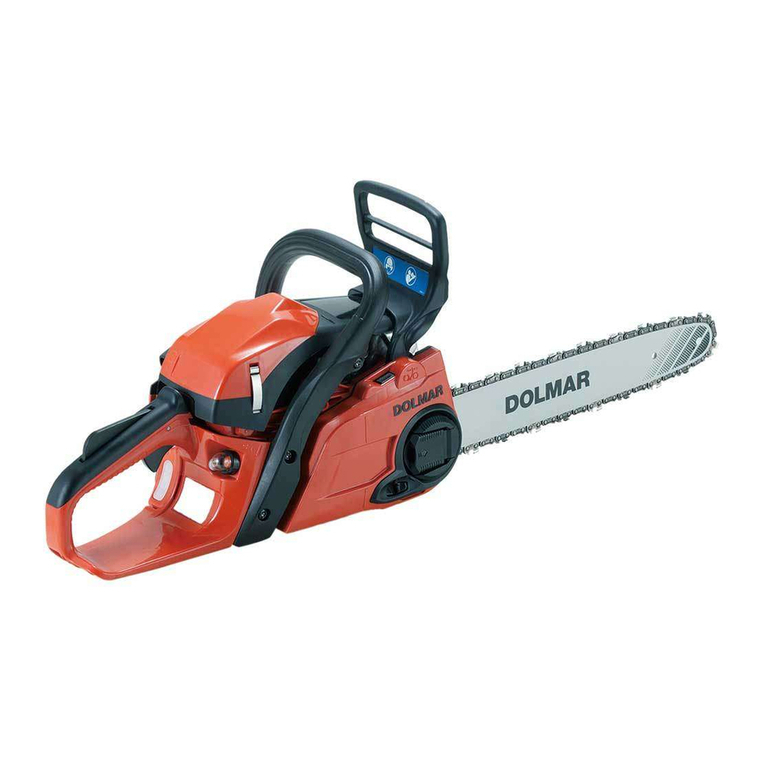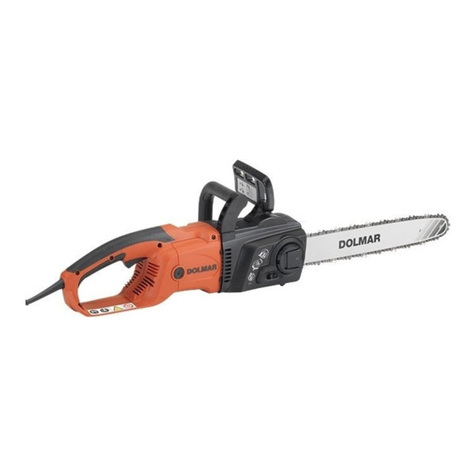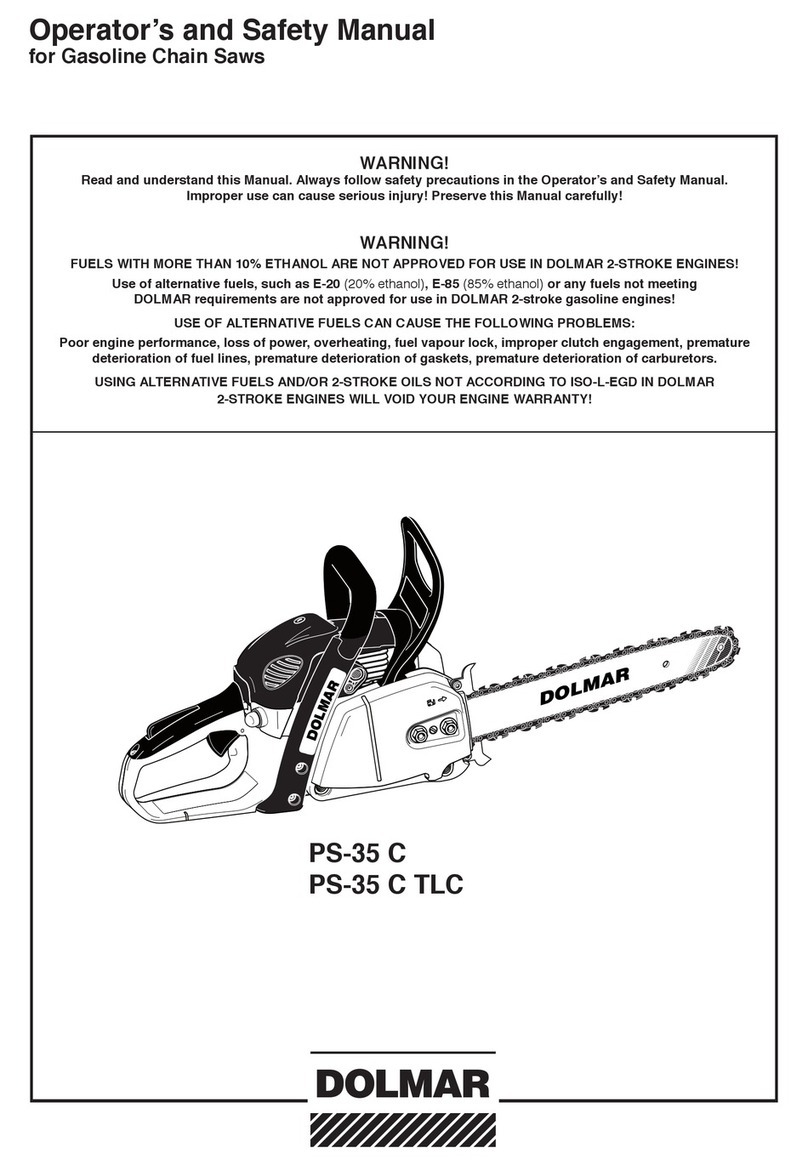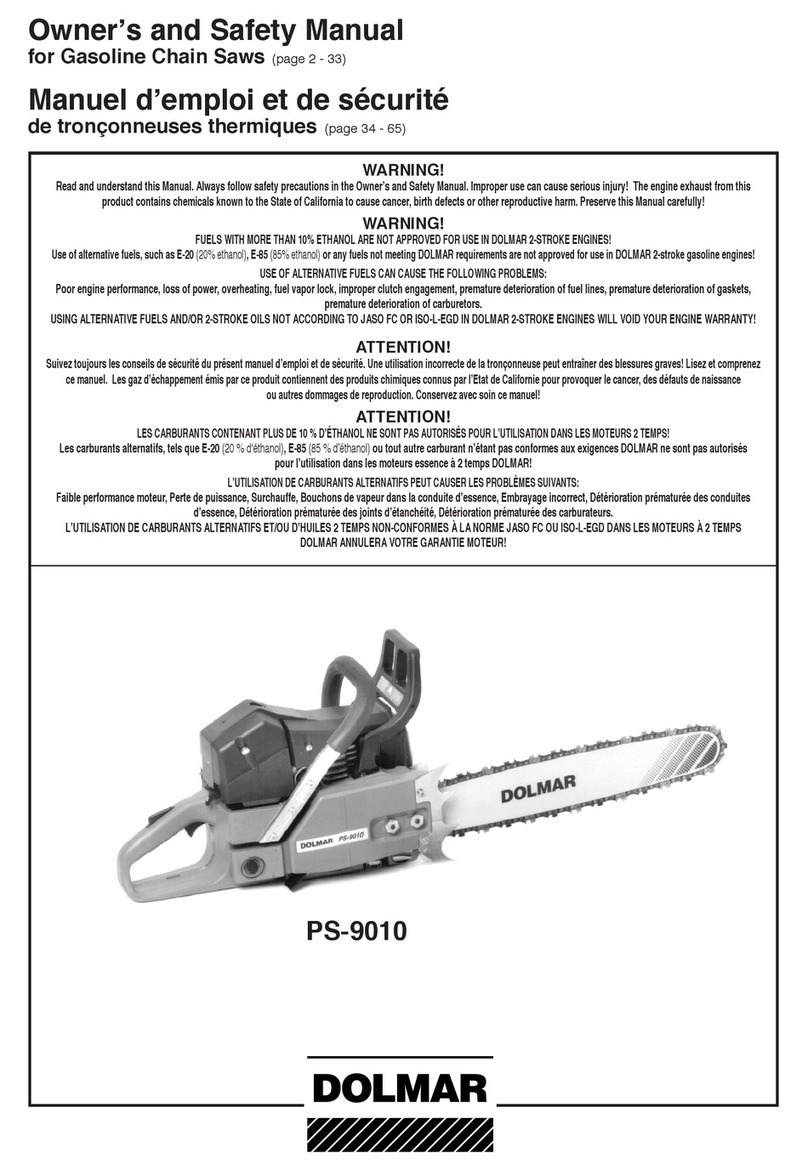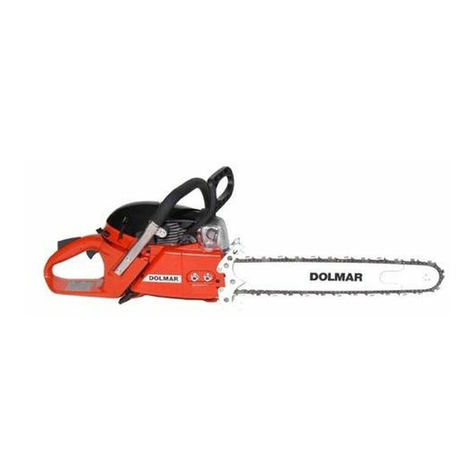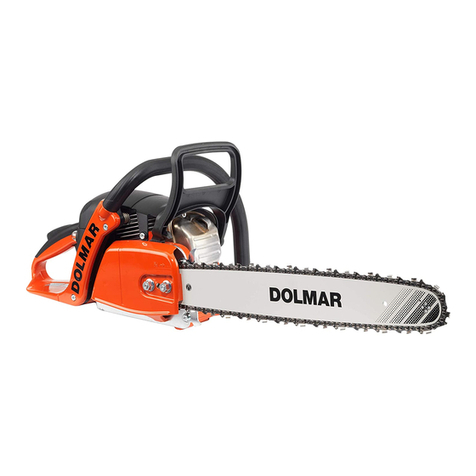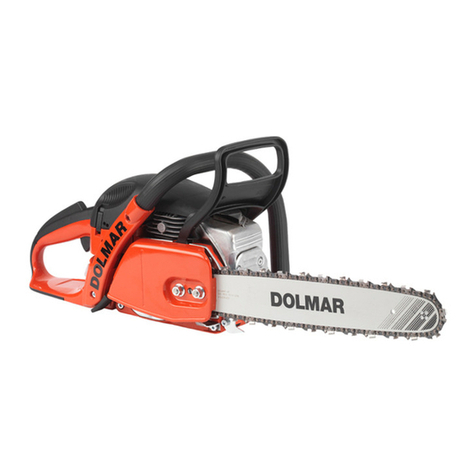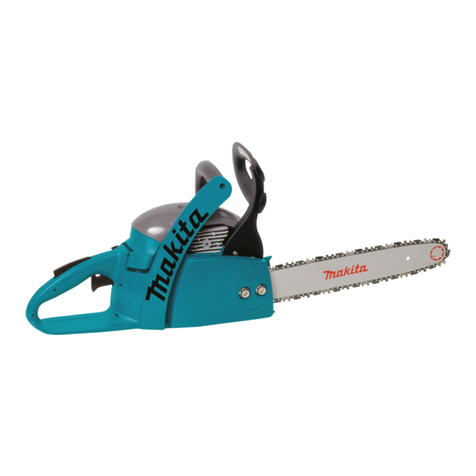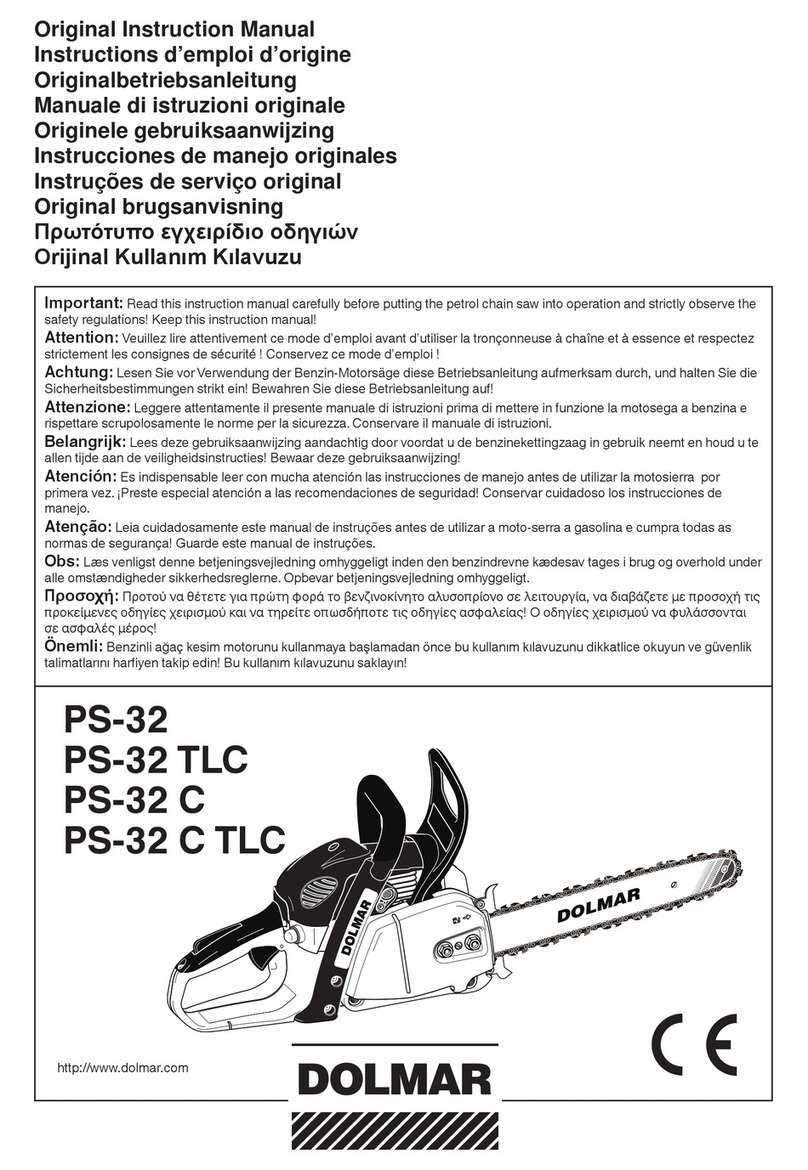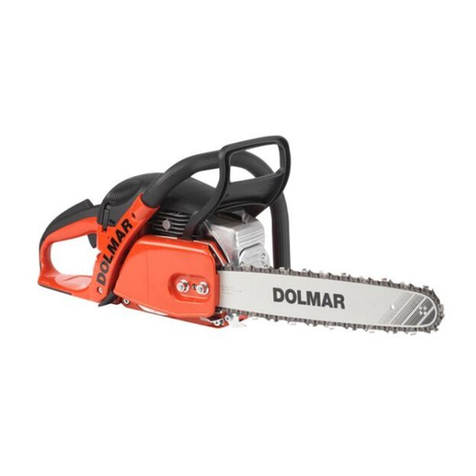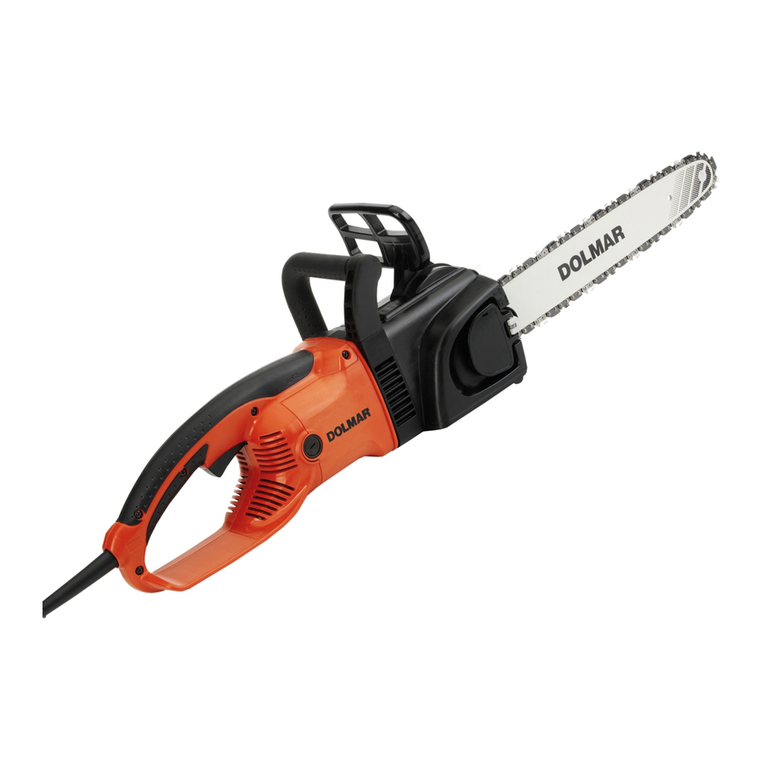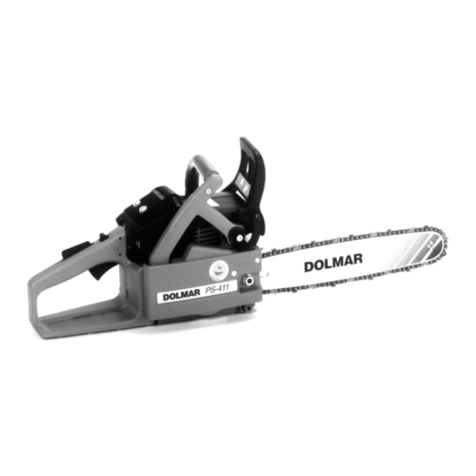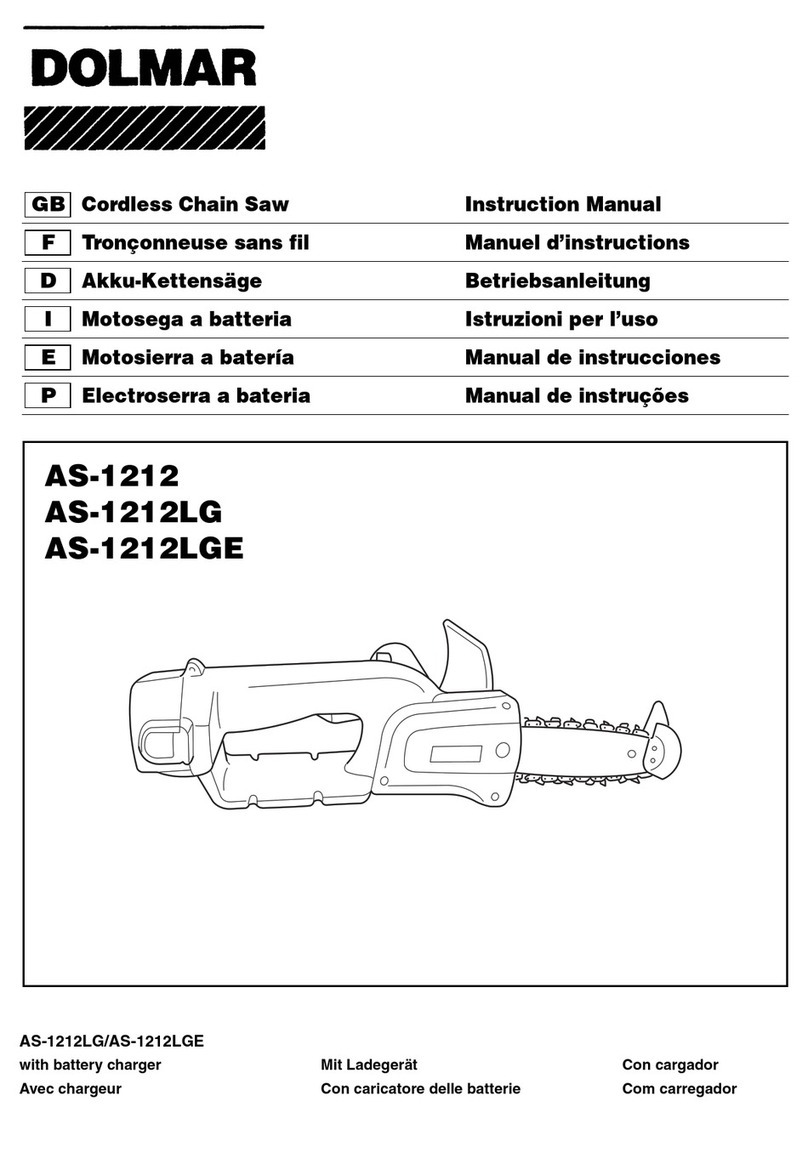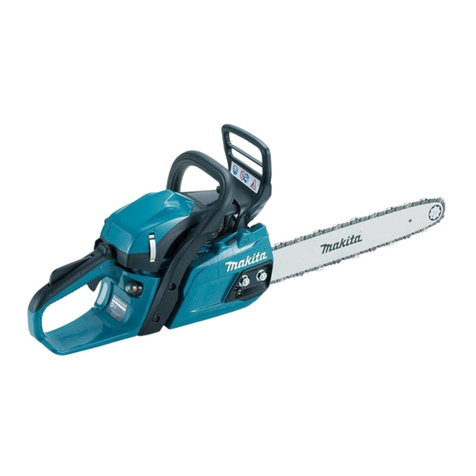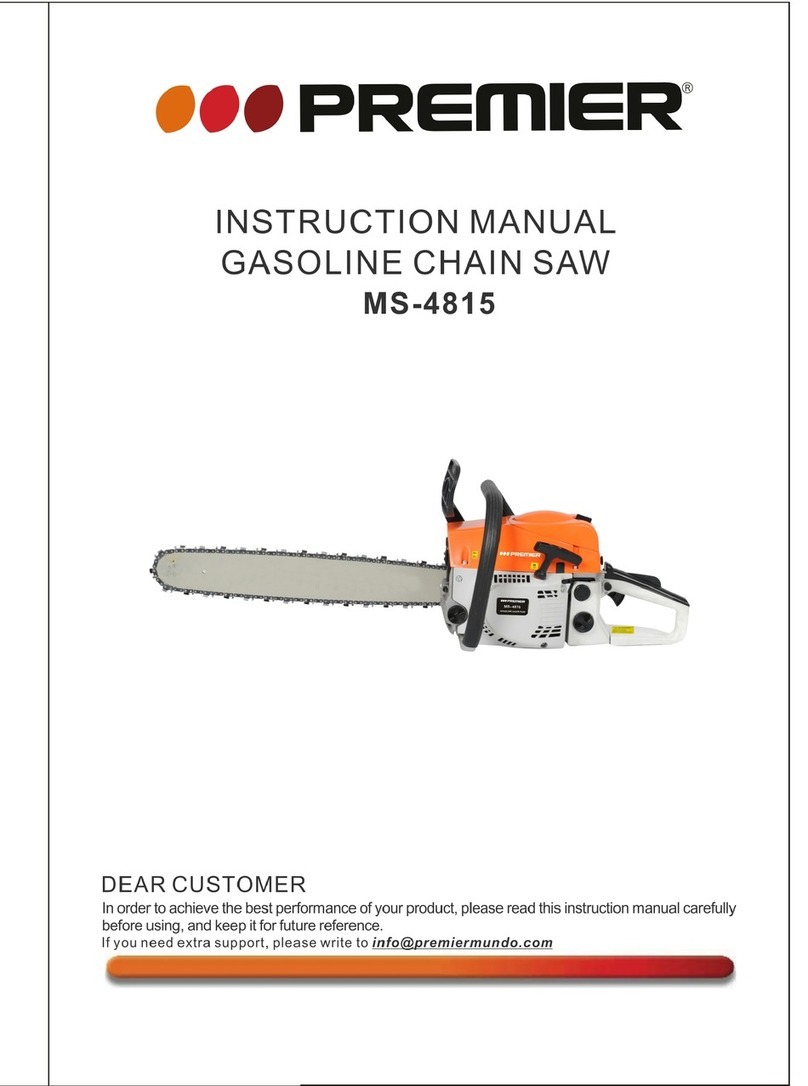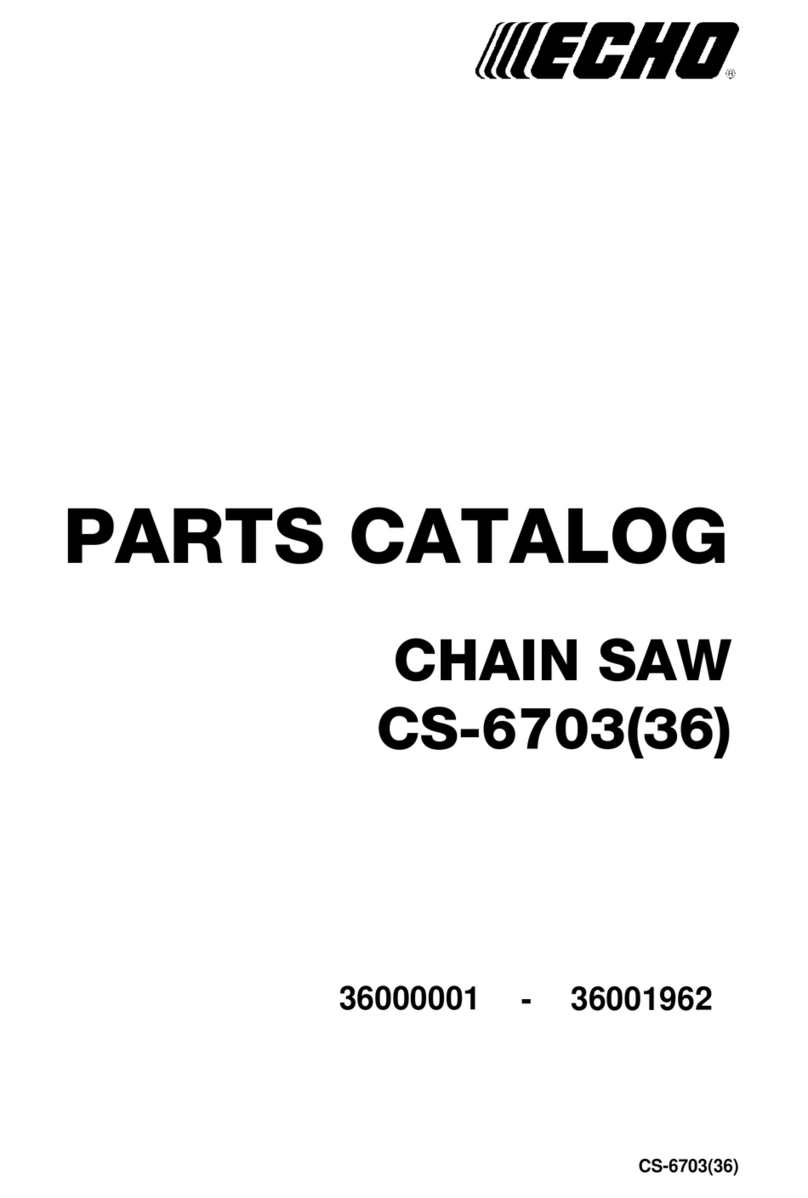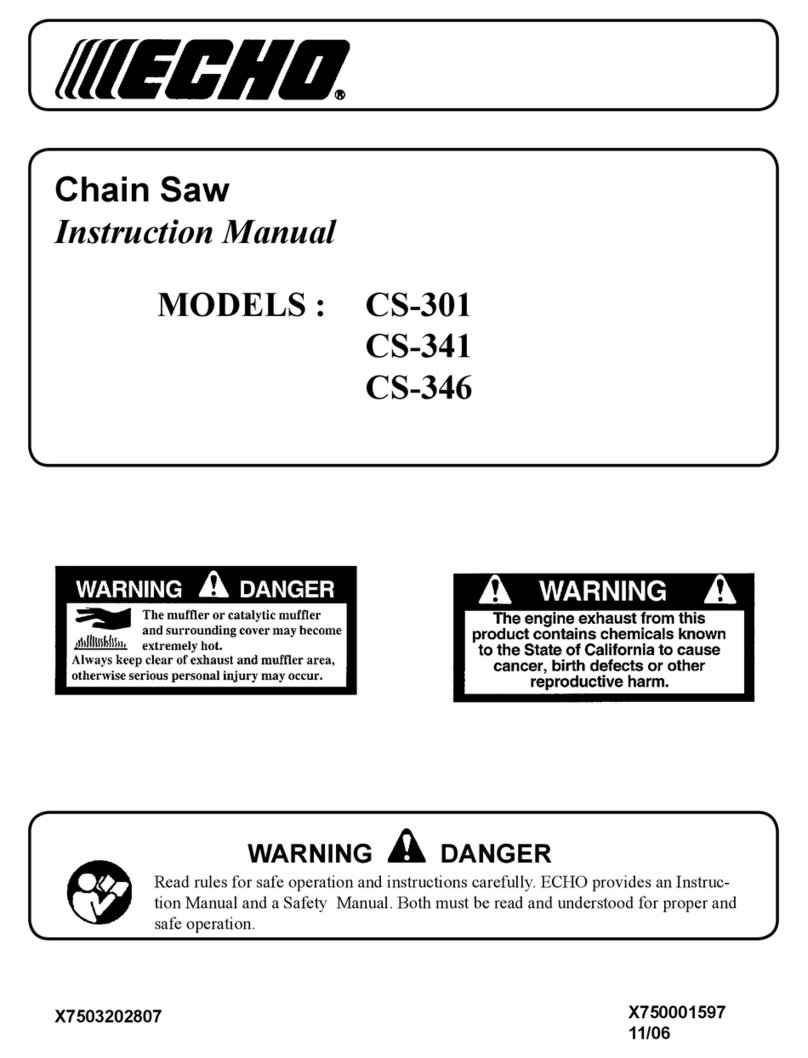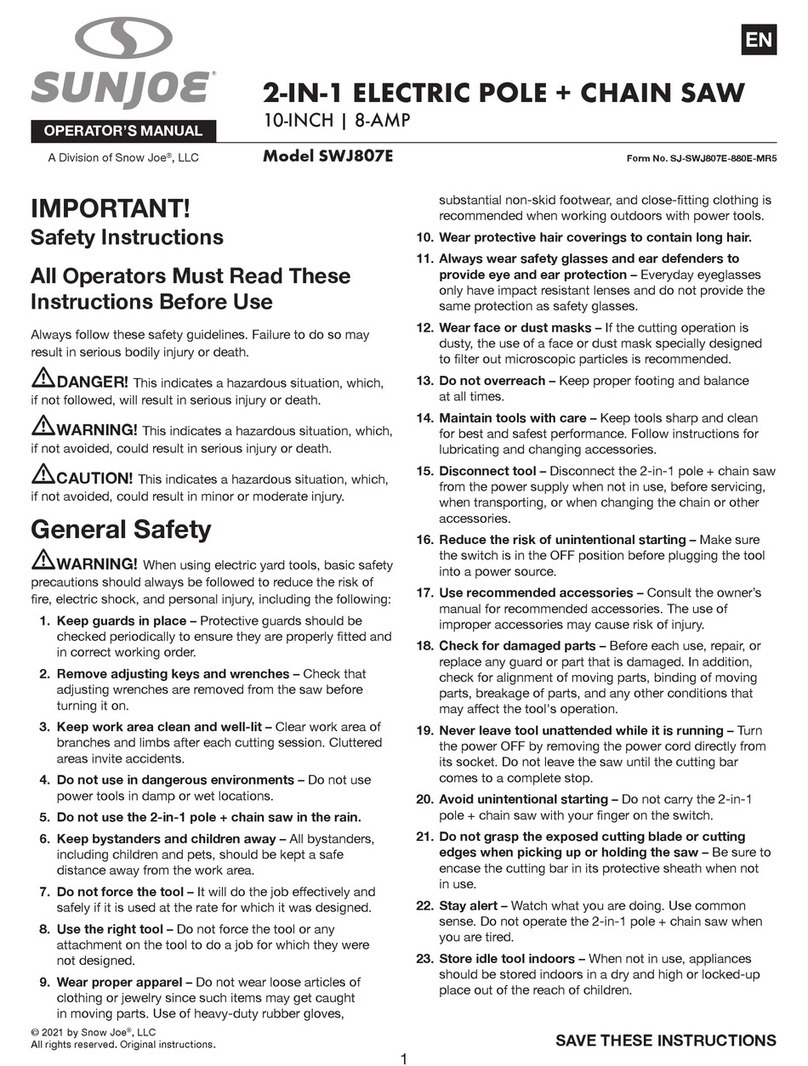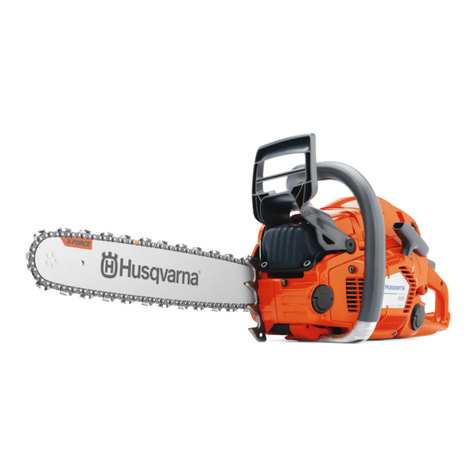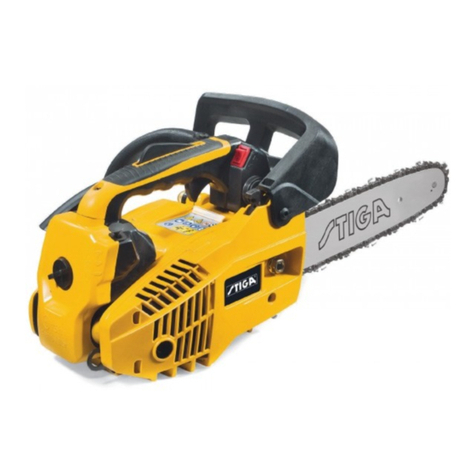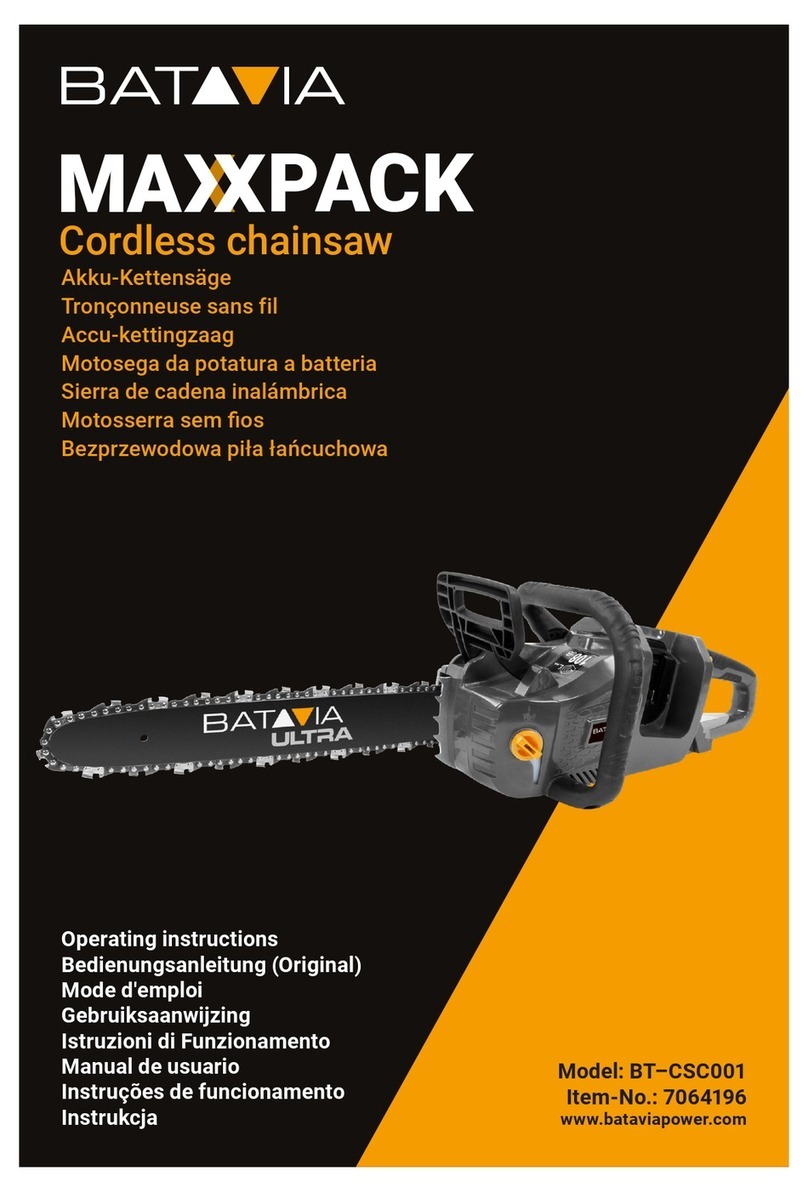3
Repair Manual PS-35
TECHNICAL DATA
PS-35 C PS-35 C TLC
Stroke volume cm335
Bore mm 38
Stroke mm 30,6
Max. power at speed kW / 1/min 1,7 / 10.000
Max. torque at speed Nm / 1/min 2,0 / 7.000
Idling speed / max. engine speed with bar and chain 1/min 2.800 / 12.800
Clutch engagement speed 1/min 4.100
Sound pressure level at the workplace LpA eq per ISO 22868 1) 3) dB(A) 102,6 / KpA = 2,5
Sound power level LWA, Fl + Ra per ISO 22868 2) 3) dB(A) 109,8 / KWA = 2,5
Vibration acceleration ahv, eq per ISO 22867 1) 3)
- Tubular handle m/s24,9 / K = 2
- Rear handle m/s25,0 / K = 2
Carburetor Type membrane carburetor
Ignition system Type electronic
Spark plug Type NGK CMR6A
or spark plug Type -
Electrode gap mm 0,5
Fuel consumption at max. load per ISO 7293 kg/h 0,68
Specific consumption at max. load per ISO 7293 g/kWh 500
Fuel tank capacity l 0,40
Chain oil tank capacity l 0,29
Mixture ratio (fuel/two-stroke oil)
- when using DOLMAR oil 50 : 1 / 100: 1 (EXTRA)
- when using Aspen Alkalyt (two-stroke fuel) 50 : 1 (2%)
- when using other oils 50 : 1 (quality grade JASO FC or ISO EGD)
Chain brake engages manually or in case of kickback
Chain speed at max. power m/s 18,9
Sprocket pitch inch 3/8
Number of teeth Z6
Chain type see the spare-parts list
Pitch / gauge inch / (mm) 3/8 / 0,050 (1,3) / 3/8 / 0,043 (1,1)
Guide bar, length of a cut cm 30, 35, 40
Guide-bar type see the spare-parts list
Weight (fuel tank empty, without chain, guide bar and accessories) kg 4,4 4,5
1) Figures derived in equal part from idling, full-load and racing speed.
2) Figures derived in equal part from full-load and racing speed.
3) Uncertainty (K=).

